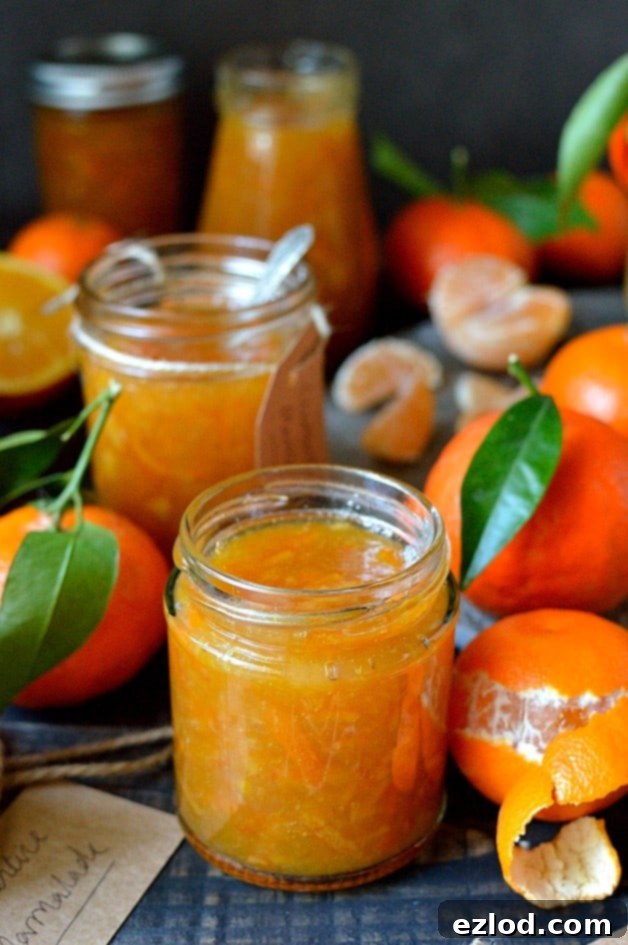Mastering Homemade Clementine Marmalade: A Zesty Winter Recipe & ThermoPop Kitchen Thermometer Review
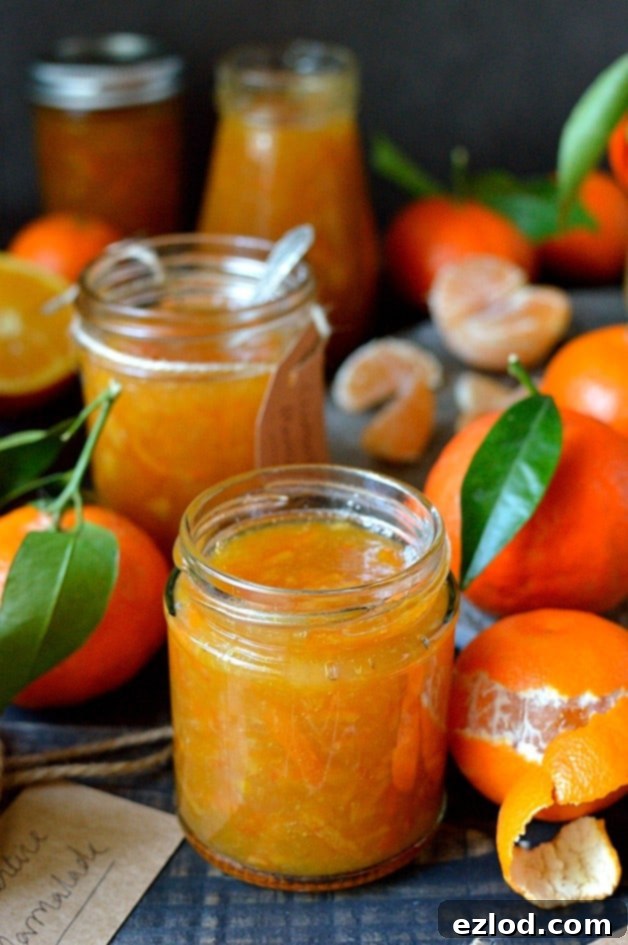
As the days grow shorter and the air turns crisp, there’s nothing quite like the warmth and aroma of homemade preserves filling your kitchen. The winter season brings with it an abundance of affordable and vibrant citrus fruits, and clementines are often incredibly plentiful and budget-friendly in stores. This seasonal bounty often leads to delightful dilemmas, like finding yourself with a generous two and a half kilograms of these sweet, tangy beauties! While enjoying several fresh clementines daily is a simple pleasure, turning some into a luscious homemade marmalade offers a truly comforting and rewarding experience.
Preserving fruit during the colder months is a cherished tradition for many, myself included. There’s a certain tranquility and satisfaction in the process, a feeling of ‘stockpiling’ delicious homemade goodness that resonates deeply when you want to hunker down at home. This clementine marmalade recipe is not just about using up extra fruit; it’s an invitation to embrace the joys of winter cooking and create something truly special. The incredible scent of it gently simmering on the stove will transform your home into an fragrant orange grove, instantly brightening even the greyest and most blustery of days.
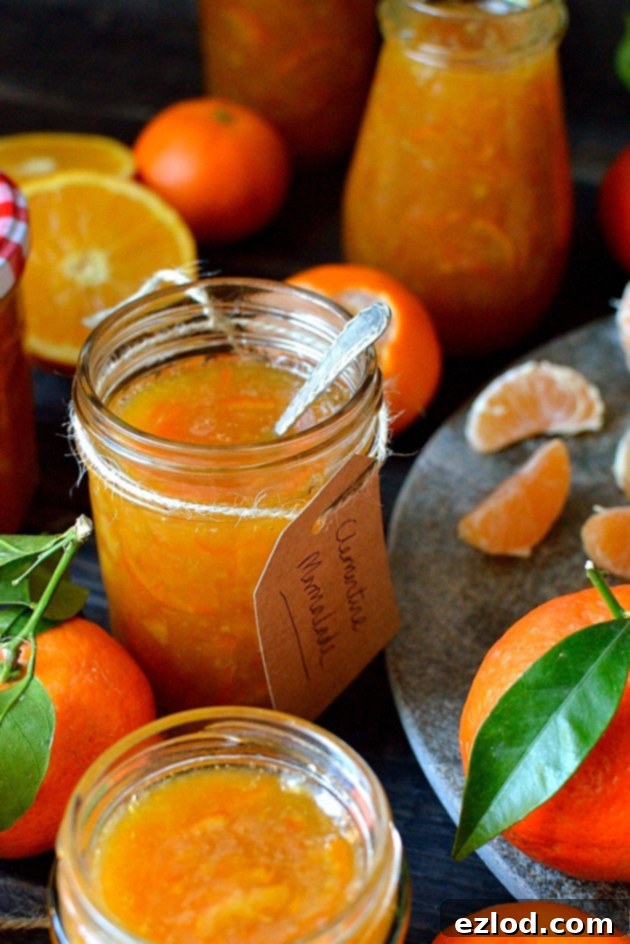
Why Clementine Marmalade is a Must-Try
While classic orange marmalade holds a special place, the beauty of homemade preserves lies in their versatility. You can craft marmalade from virtually any citrus fruit, and clementines offer a particularly delightful twist. This clementine marmalade recipe yields a spread that is exquisitely delicious, boasting a slightly less bitter profile than its traditional orange counterpart. This makes it wonderfully accessible for those who prefer a subtler tang, without ever becoming cloyingly sweet. It strikes a perfect balance, allowing the bright, zesty notes of the clementines to truly shine.
Beyond its fantastic flavour, making clementine marmalade is an excellent and practical way to utilize a surplus of fruit. If you, like me, often find yourself with an abundance of seasonal produce, turning it into preserves is a smart and enjoyable solution. Furthermore, this vibrant marmalade makes a truly thoughtful and cherished homemade gift, especially if prepared during the festive season leading up to Christmas. Imagine gifting beautifully labelled jars of your own handcrafted marmalade to friends and family – it’s a gesture that speaks volumes.
Admittedly, the process of making marmalade does take a little time. However, it’s important to note that much of this time is hands-off, involving simmering rather than constant attention. The most labour-intensive part is the initial slicing of the clementines, but even that is a simple, meditative task. None of the steps are particularly difficult, and the immense satisfaction of spooning your own perfectly set, shimmering marmalade into jars is more than enough reward for the effort. It’s a culinary alchemy that transforms humble fruit into liquid gold, ready to adorn your morning toast, scones, or even elevate a cheese board.
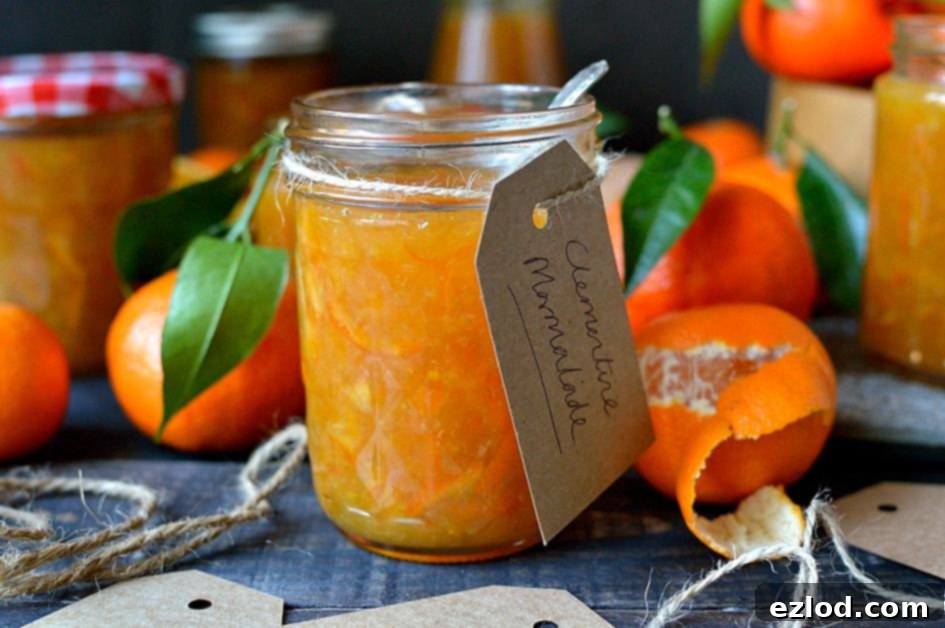
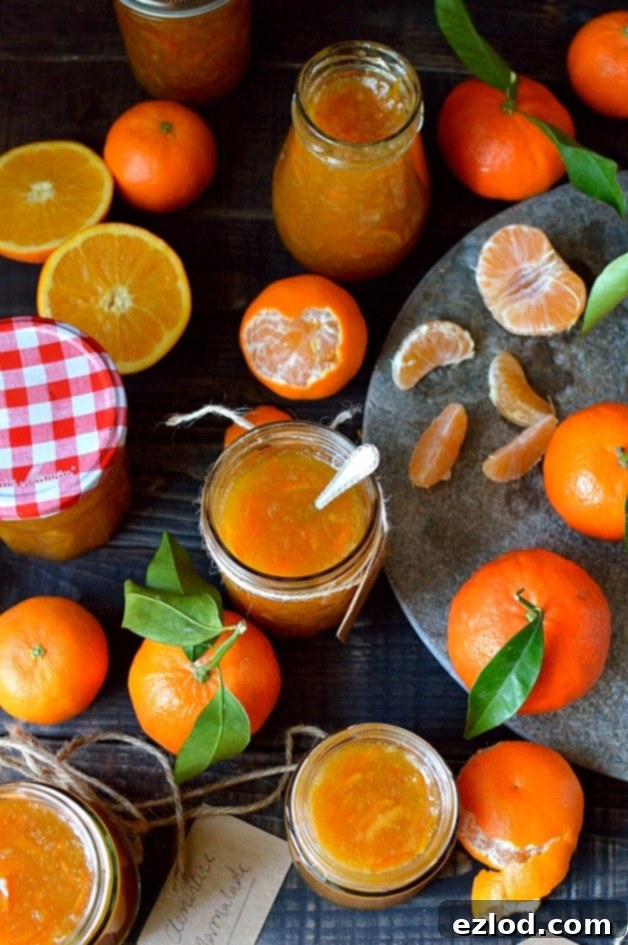
Customizing Your Marmalade: Tips and Flavor Variations
This recipe yields approximately six jars of marmalade, though the exact quantity will depend on the size of your jars. It’s incredibly adaptable; you can easily halve the recipe to make a smaller batch for personal enjoyment, or double it if you’re planning a grand preserving session to create an abundance of gifts (just ensure you have a large enough pan!). The flexibility of this recipe allows you to tailor your marmalade-making adventure to your needs and available ingredients.
For those who love to experiment with flavours, there are a couple of simple yet sophisticated variations you can try. To infuse your marmalade with an exotic, aromatic note, simply add about five split cardamom pods to the muslin bag along with the clementine and lemon pips during the simmering stage. The subtle warmth of cardamom beautifully complements the bright citrus. Alternatively, for a luxurious, grown-up twist, stir in a dash of whisky or Cointreau once your marmalade has reached its perfect setting point. This adds a wonderful depth and complexity, transforming your humble preserve into a gourmet delight. These small additions can elevate your marmalade, making it even more unique and impressive.
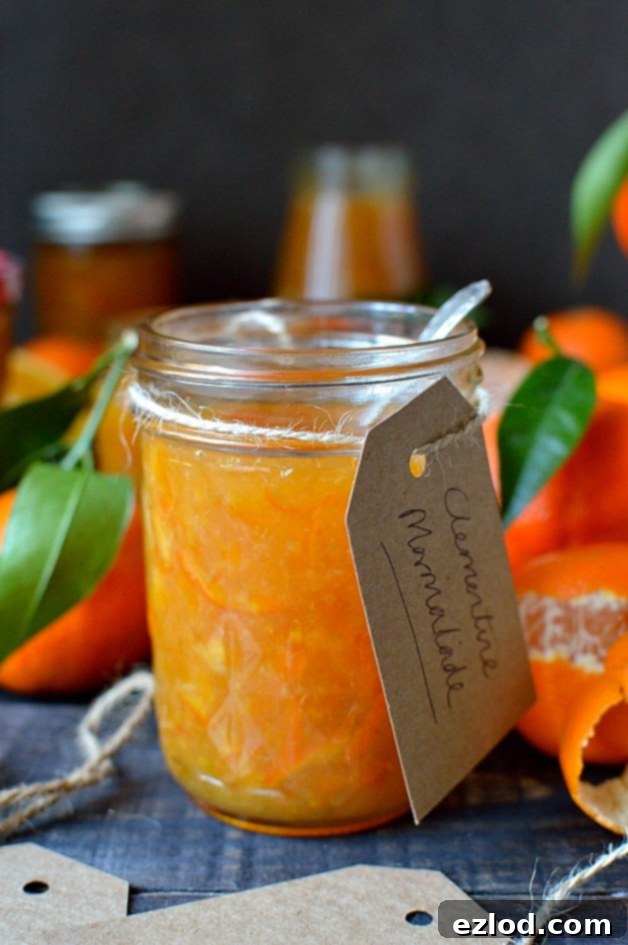
The Secret to Perfect Preserves: The ThermoPop Thermometer Review
Achieving the perfect set for marmalade can sometimes feel like a dark art, but with the right tools, it becomes a simple, scientific process. That’s where a reliable kitchen thermometer truly shines. I recently had the pleasure of reviewing the ThermoPop thermometer, a new offering from the renowned makers of the Thermapen, a device widely considered the gold standard among thermometers.
The Thermapen boasts an impressive array of features: a large, easy-to-read rotating display, simple button-free operation, exceptional accuracy and precision, a slender probe, an extensive temperature range, effortless switching between Centigrade and Fahrenheit, and incredibly fast temperature readings of under three seconds. It is, without a doubt, an indispensable tool in my kitchen for everything from perfectly cooking meat to making jams and preserves, confectionery, deep frying, and even bread baking. However, with a retail price starting around £48, it’s an investment. This is precisely where the ThermoPop comes in, offering a fantastic alternative.
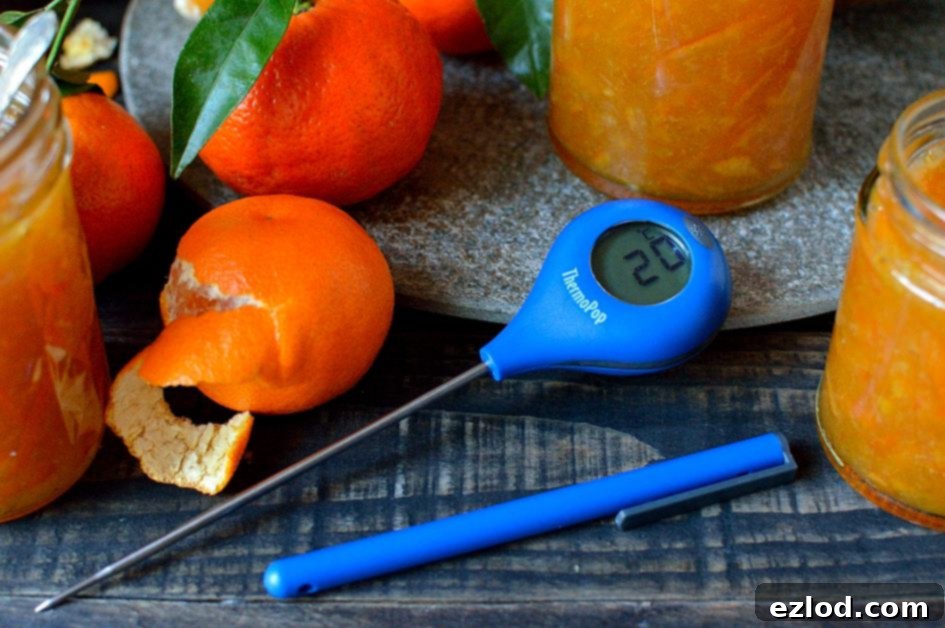
ThermoPop: High Performance at an Affordable Price
Retailing at a much more accessible £19.80, the ThermoPop brings many of the Thermapen’s coveted features to a wider audience. It’s designed in a compact size with a slim probe, making it easy to maneuver in various cooking vessels. It also includes a protective cover that conveniently clips onto a pocket, ensuring your thermometer is always within easy reach when you need it most.
The display is generously sized and remarkably easy to read, enhanced by a backlit screen. This feature is particularly useful when reaching into a hot oven or cooking in dimly lit conditions, ensuring you always get a clear reading. To conserve battery life, the ThermoPop also features an automatic power-off function, a thoughtful addition for everyday use. A simple click of a small button allows the display to rotate 90 degrees, meaning you can read the temperature clearly from any angle, even if you’re holding it upside down.
Further enhancing its versatility, the ThermoPop can switch between Centigrade and Fahrenheit with ease, is completely waterproof for easy cleaning, and is currently available in a choice of vibrant red, classic white, or cool blue colours. These features combine to make it an incredibly user-friendly and practical kitchen tool.
Comparing ThermoPop and Thermapen: What You Gain, What You Save
When you see such a significant price difference between the Thermapen and the ThermoPop, it’s natural to wonder about the trade-offs. Fortunately, the compromises are minor and largely inconsequential for most home cooks. The primary difference lies in the temperature read time, which increases slightly from the Thermapen’s sub-3 seconds to a still very rapid 5 or 6 seconds for the ThermoPop. There’s also a slight difference in accuracy and precision: the Thermapen boasts an accuracy of ±0.4°C, while the ThermoPop is accurate to ±1°C. For the vast majority of household cooking and baking tasks, this difference in accuracy will not pose any practical problems whatsoever. Both are highly reliable for ensuring food safety and perfect results.
I’ve put my ThermoPop through its paces extensively, especially during the busy Christmas period, and it has consistently proven to be incredibly useful and accurate. It was instrumental in checking the setting point for this very clementine marmalade, ensuring a perfect consistency every time. For an inexpensive thermometer, I genuinely believe the ThermoPop is the best on the market, offering exceptional value. It’s an absolute must-buy if you’re looking for a high-quality thermometer but don’t wish to invest in the premium price tag of the Thermapen.
The ThermoPop is incredibly versatile, making it an essential kitchen tool that simplifies cooking and eliminates guesswork. Whether you’re roasting a chicken, baking bread, or making delicate confectionery, a good thermometer provides confidence and consistent results. I wholeheartedly recommend that anyone who cooks or bakes regularly should own one, and the ThermoPop is undoubtedly a safe and smart choice.
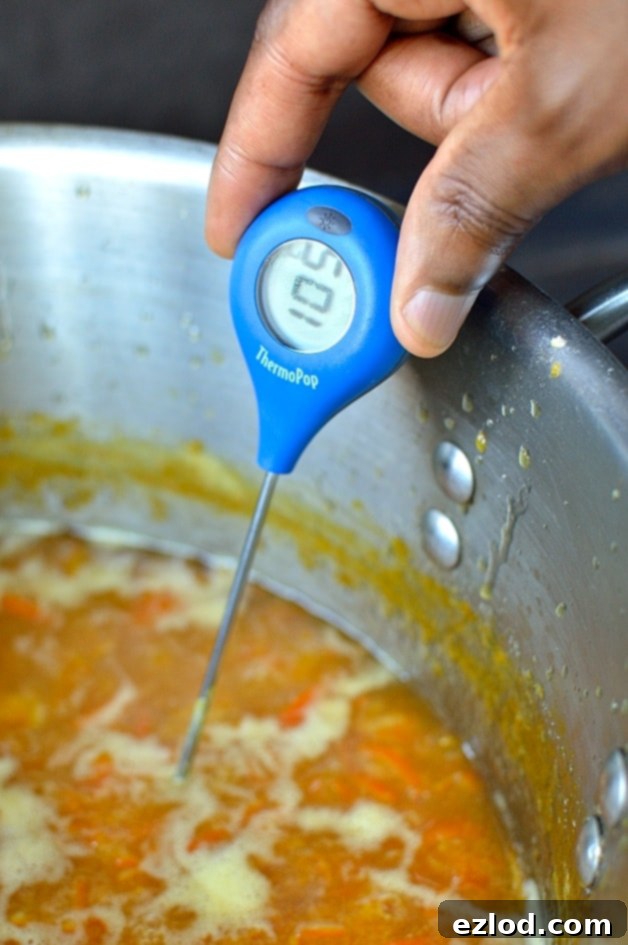
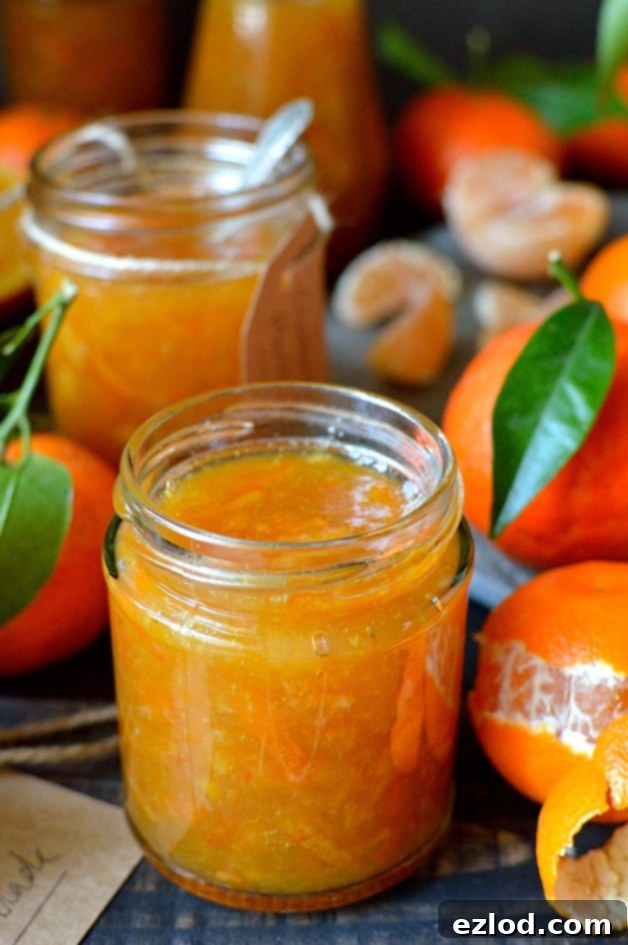

Print
Clementine Marmalade
Ingredients
- 1 kg clementines (approximately 10-12 medium-sized clementines)
- 3 large lemons, juice and pips (to extract pectin for setting)
- 2 litres water
- 1 kg granulated sugar (standard white sugar)
- Optional flavor variations: 5 split cardamom pods (for aromatic notes) OR a dash of whisky/Cointreau (for an adult twist).
Instructions
-
Begin by thoroughly scrubbing the clementines to ensure they are clean. Remove any stalks, then use a very sharp knife to slice them into thin rounds, aiming for no more than a couple of millimetres thick. Next, cut these slices into smaller pieces. Remember, the size of these pieces will determine the ‘shred’ in your finished marmalade. For a fine-shred marmalade, slice them very thinly; for a chunkier texture, leave them a bit thicker. As you work, reserve all the clementine pips (seeds). Once sliced, transfer the clementines and any accumulated juice into a large, heavy-bottomed saucepan.
-
Juice the lemons directly into the saucepan, ensuring you reserve all the lemon pips as well. Gather both the reserved lemon and clementine pips and place them into a piece of muslin cloth. Tie the muslin tightly to form a small bag, then add this bag to the pan. This bag of pips is crucial as it contains a high concentration of natural pectin, which is essential for the marmalade to set. If you don’t have muslin, a clean tea infuser or a heatproof tea strainer can also work.
-
Pour the two litres of water into the pan with the clementines and pip bag. Bring the mixture to a rolling boil, then reduce the heat to a gentle simmer. Cook for approximately 2 hours, or until the clementine peel is exceptionally tender and easily squishes between your fingers. At this stage, you have two options: either remove the pan from the heat, cover it, and let it stand overnight to allow the flavours to develop further and the peel to soften even more (this often results in a better set), or you can proceed directly to the next step.
-
Carefully remove the bag of pips from the pan. Allow it to cool sufficiently so you can handle it safely. Once cool enough, squeeze the bag firmly over the pan to extract as much of the pectin-rich juice as possible back into the clementine mixture. This step is vital for ensuring your marmalade achieves a good set.
-
While the clementine mixture is simmering or resting, sterilise your jam jars and lids. A simple and effective method is to wash them thoroughly in hot, soapy water, rinse them well, then place them in a low oven (around 120°C/250°F) until they are completely dry. I usually leave them in the warm oven until I am ready to fill them. Also, place a couple of saucers in your freezer – these will be used for testing the marmalade’s setting point later.
-
Add the granulated sugar to the clementine mixture in the pan. Place the pan over a gentle heat and stir continuously until all the sugar has completely dissolved. This is crucial to prevent crystallisation. Once dissolved, increase the heat to bring the marmalade to a rapid, rolling boil. Maintain this rapid boil, stirring occasionally to prevent sticking, until the marmalade reaches 105°C (221°F) on a reliable kitchen thermometer like the ThermoPop. This usually takes about 10-15 minutes, but timing can vary.
-
To check if the marmalade has reached its setting point, remove the pan from the heat. Take one of the chilled saucers from the freezer and spoon a small teaspoonful of marmalade onto it. Place the saucer in the fridge for about one minute to cool the marmalade quickly. Then, gently push the surface of the marmalade with your fingertip; if the surface wrinkles and crinkles when pushed, it has reached its setting point and is ready. If it remains liquid or doesn’t wrinkle, return the pan to a rapid boil for another five minutes, then repeat the saucer test. Continue this process until a good set is achieved.
-
Once the marmalade has reached its perfect setting point, remove it from the heat. Allow it to settle for about 15 minutes before carefully ladling it into your warm, sterilised jars. It’s important never to pour very hot jam or marmalade into cold jars, as this can cause them to crack. Fill the jars almost to the brim, then securely place the lids on. Set the jars aside in a safe place until they are completely cool. Once cooled, store your homemade clementine marmalade in a cool, dry pantry or cupboard. It will keep for many months, allowing you to enjoy the taste of winter sunshine long after the season has passed.
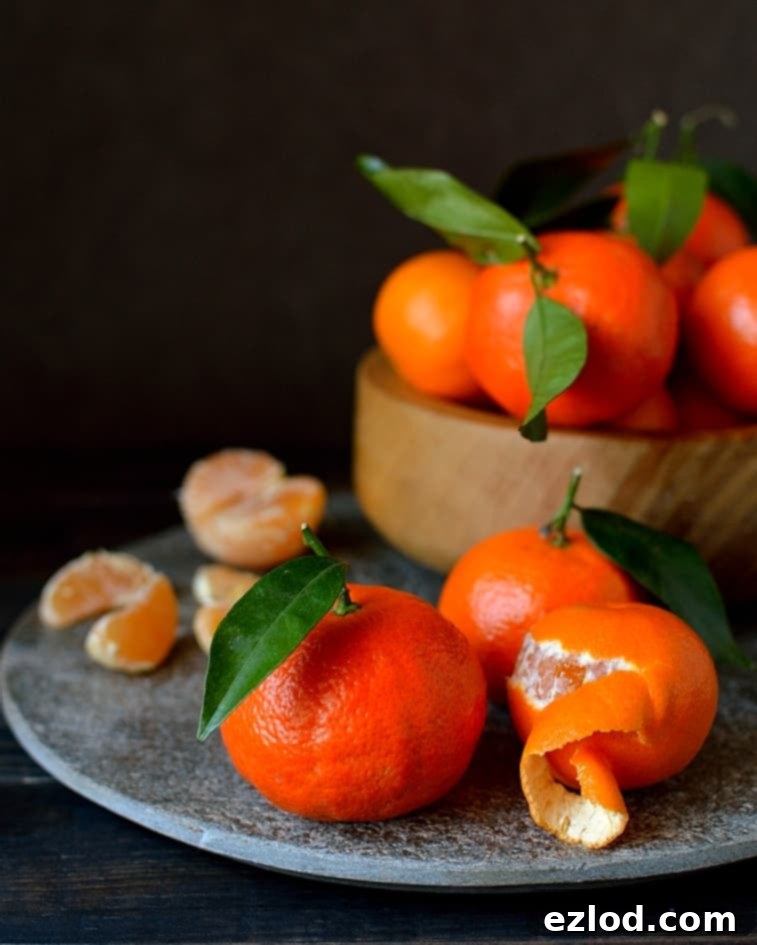
This post is sponsored by ThermoPop. All opinions expressed are, as always, my own. Thank you for supporting the brands that help keep Domestic Gothess running and allow me to share these delicious recipes and helpful reviews with you.
